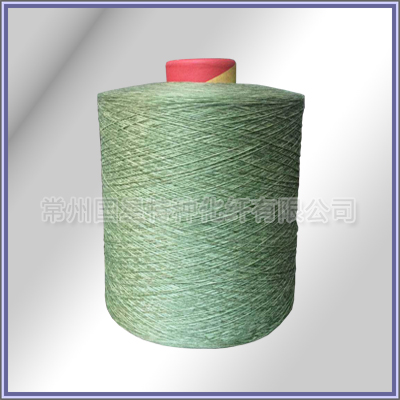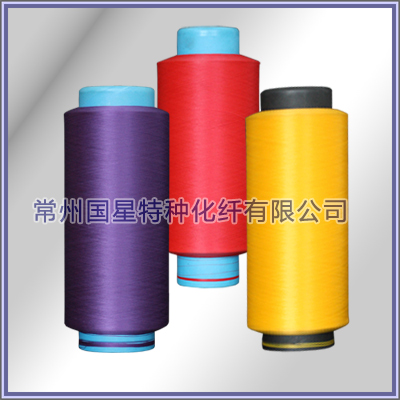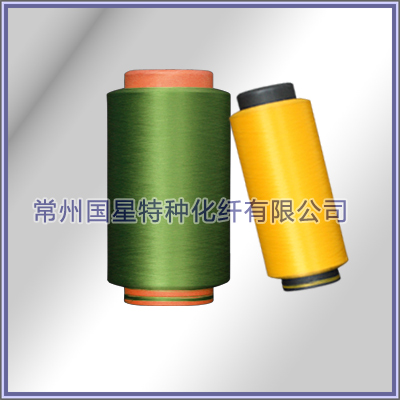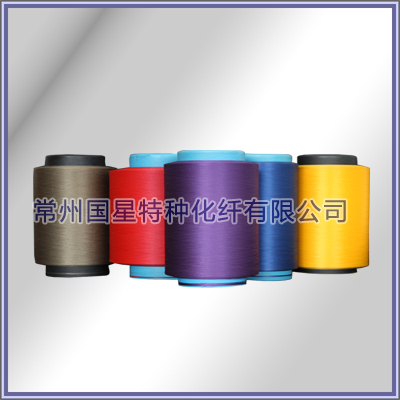On December 5, the 2019 National Textile Machinery Industry Production and Management Work Symposium was held in Chongqing. Wang Shutian, president of China Textile Machinery Association, Zhu Xiangmin, chief engineer, vice presidents Gu Ping, Li Yi, Lu Honggang, Xu Lin, Liu Song, and representatives from more than 100 textile machinery companies from all over the country attended the meeting to analyze market situation and development. Trends to explore future directions.
Slower growth rate
Main business income and export volume still achieve double-digit growth
In the first three quarters of 2018, under the support of the overall smooth operation of the macro economy and the textile industry, the industrial upgrading of the textile machinery industry was further advanced, and the overall operation quality was good, maintaining a growth trend. The main business income and exports still maintained double digits. The length of the industry is slow, but the growth rate of the industry has slowed down.
According to Wang Shutian's analysis, although some product orders have declined since the third quarter, the overall operation of the textile machinery industry in 2018 seems to have remained stable. He said that technological innovation and structural adjustment have supported the steady growth of the industry. Whether it is a mainframe or a basic component, its technical level is constantly improving, and some are close to the international advanced level, and are constantly improving in stability, reliability, and consistency, especially in terms of economy. In addition, textile machinery enterprises pay more attention to the improvement of product technology content and make breakthroughs in many technical fields. On the other hand, in 2018, the characteristics of smart manufacturing are more prominent. With the transfer of the textile industry, the textile machinery market is also changing.
Looking forward to 2019, Wang Shutian believes that there are many uncertain factors in the future, and it is more difficult to judge. However, market competition is expected to become more intense in 2019, and the market situation may become severe.
Liu Song, vice president of China Textile Machinery Association, analyzed the current market situation and development trend of the textile machinery industry.
In the first three quarters of this year, the economic indicators such as the main business income and export volume of China's textile machinery industry achieved double-digit growth year-on-year. The main business income was 77.634 billion yuan, a year-on-year increase of 12.11%; the total profit was 5.335 billion yuan, a year-on-year increase of 9.44%. In the first three quarters, textile machinery exports were 2.78 billion US dollars, up 16.96% year-on-year; imports were 2.751 billion US dollars, up 34.35% year-on-year.
In order to understand the economic operation of the textile machinery industry in the first three quarters of 2018 and the development trend in 2019, the China Textile Machinery Association conducted a questionnaire survey on 372 mainframe and equipment manufacturers, covering spinning machinery, weaving and weaving preparation machinery. Knitting machinery printing and dyeing machinery, chemical fiber and non-woven machinery and other industries. In the first three quarters of 2018, more than half of the orders of enterprises increased in different degrees. The proportion of enterprises with more than 10% of total orders increased by 37.4%, the growth of 25.75% was within 10%, and the orders of 37.87% were the same as last year. The number of companies with reduced orders accounted for 10.84%. In terms of foreign orders, 26.33% of enterprises grew by more than 10%, 24.26% of enterprises grew by less than 10%, and 37.87% of enterprises were flat with the same period of last year. Enterprises that reduced by less than 10% and reduced by more than 10% accounted for 7.99% and 3.55% respectively. .
For the expectation of order demand in the fourth quarter of 2018, 52.49% of the enterprises are expected to grow, which is lower than the 63.15% increase in orders in the first three quarters. It can be seen that the company is more cautious in the fourth quarter, 32.84% The company is expected to be flat with the previous three quarters, while 14.37% of companies expect orders to decrease in the fourth quarter. Among them, foreign orders, 43.79% of enterprises are expected to grow in the fourth quarter, 45.34% of enterprises are expected to be flat with the first three quarters, and 10.87% of enterprises are expected to reduce orders.
Among the enterprises surveyed, the primary problem facing the current production of enterprises is the volatility of raw material prices, disorder and poor price competition. In addition, intellectual property issues, insufficient domestic market demand, and rising production costs are also common problems facing enterprise development.
58.70% of the companies surveyed believe that the annual operating income will increase in 2018, but only 45.13% of enterprises have the same attitude towards 2019 operating income; 29.97% believe that 2018 operating income will be the same as last year, In 2019, this number is expected to grow to 37.76%, and 11.50% of companies believe that this year's operating income is lower than last year. Among the companies surveyed, 43.07% of the companies expressed optimism about the industry situation in 2018. They believed that the industry in the general situation accounted for 45.72%, and 10.91% of the companies believed that the performance in 2018 was not optimistic. For the 2019 forecast, optimistic and average companies are expected to have different degrees of reduction, 3.33% and 4% respectively. In summary, the company's judgment on the situation of 2019 is much more cautious in terms of business revenue and industry.
Liu Song said that looking forward to 2019, influenced by US trade protectionism, although the world's major economic organizations have lowered their economic growth rates, the world economy will still be on a recovery track, the international market demand is basically stable, and China's national economy is developing steadily. The trend will not change. Generally speaking, the domestic and international market environment faced by China's textile industry is still basically stable in 2019, but external demand faces more uncertainties and various risk factors have increased. Affected by this, the domestic market pressure of the textile machinery industry is bound to increase, and foreign markets are still expected to maintain relatively stable development. Textile machinery enterprises must actively accelerate structural adjustment and technological innovation, and operate steadily to cope with market fluctuations, and work together to promote China's textile machinery industry has achieved high quality development.
Demand differentiation
Energy-efficient, high-level equipment is more popular
Since the beginning of this year, with the differentiation of textile industry demand, the market sales of textile machinery in various sub-sectors are also different.
Zhao Xiaogang, deputy secretary-general of China Textile Machinery Association, Liao Zheng, deputy director of the second department of industry, Zhang Yuqi, director of the fourth department of industry, and Liu Ge, director of the industry, respectively, on spinning machinery, knitting machinery, weaving machinery, printing and dyeing and finishing machinery, chemical fiber The market situation of mechanical and nonwoven machinery was analyzed.
From the statistics of the key textile enterprises of the China Textile Machinery Association, it can be seen that in addition to the high-speed growth of the rotor spinning machine, the ring spinning machine, the roving frame, the draw frame, the combing machine, the carding machine and the automatic winder This year's domestic market sales have experienced varying degrees of decline. It shows that the user still maintains the heat for the short process equipment. With the high speed of the short process equipment and the wide range of suitable spinning materials, the number of spinning can be higher and higher, and the advantage will be more obvious. In addition, in recent years, the technology of the host computer has improved significantly, and the product speed and output have been improved. The cost performance and differentiation are more in line with the needs of the market.
Zhao Xiaogang said that the overall sales volume of spinning machinery showed a downward trend, and the increase in sales in 2017 was in line with the prosperity index of the cotton textile industry. However, from the breakdown of statistical data, the proportion of draw frame with autoleveling, roving frame with collective doffing, spinning frame, and gathering spinning equipment has increased year by year. This shows that spinning companies pay more and more attention to the automation, continuity and intelligence of equipment. In addition, the individualization, small variety and diversification of textile products become the norm. He also explained the importance of opening up overseas markets through data comparison at home and abroad.
From January to September 2018, affected by the international economic recovery, strong domestic market demand and product structure upgrade, the sales of three main-type high-speed rapier looms, water jet looms and air jet looms of weaving machinery were different. increase.
According to China Textile Machinery Association, from January to September 2018, the main domestic production enterprises of high-speed rapier looms sold 5,490 units, an increase of 6.11% year-on-year; the main domestic production enterprises of water-jet looms sold a total of 42,793 units, a year-on-year increase of 94.51%. The main domestic manufacturers of air-jet looms sold a total of 13115 units, an increase of 43.16%.
It is expected that the water-jet looms and air-jet looms will increase by a large margin in the whole year of 2018; the growth rate of high-speed rapier looms will remain stable. However, affected by various uncertain factors, the operation of weaving machinery in 2019 remains to be seen, and growth expectations are expected to decrease. In the first three quarters of 2018, the three major types of knitting machinery, the flat knitting machine, the circular weft knitting machine and the warp knitting machine market were all running slowly.
After the rapid development in recent years, the flat knitting machine continued to maintain its production and sales in the first half of this year. Since the third quarter, the growth rate has slowed down. As the main growth point of the computerized flat knitting machine market in recent years, the upper machine continues the good growth trend of last year. Affected by the downstream market, the market for single-system computerized flat knitting machines producing sweaters was flat. The high-needle fine-pitch flat knitting machine and the full-form computerized flat knitting machine have received continuous attention from the company.
The situation of the circular weft machine industry was good in the first half of the year, but the third quarter was affected by the international trade environment, and orders were significantly reduced. The total sales volume in the first three quarters decreased year-on-year. The domestic market is still dominated by ordinary single-duplex models, and the market for computerized jacquard circular machines is stable. The overseas market of the circular weft machine performed poorly in the third quarter, and most of the domestic domestic enterprises of circular knitting machines showed a certain decline in export orders. According to the statistics of the Textile Machinery Association, the sales volume of the circular weft machine in the first three quarters of 2018 was about 15,000 units, a year-on-year decrease of 11%. According to customs statistics, the export value of China's circular weft machine industry in the same period was US$162 million, a year-on-year decrease of 11.7%.
The overall operation of the warp knitting machine industry in the first three quarters also slowed down. The saturation of the downstream market of lace machines led to a slight decrease in sales and sales. The market for double-needle bed warp knitting machines is relatively stable, and sales and sales have increased steadily. High-speed, wide-format, double-needle bed warp knitting machines with Jaka are popular in the market. Since the third quarter, the market for high-speed machines has gradually cooled down, and the market has stabilized, mainly due to market saturation and high price fluctuations in the upstream raw materials market. Multi-axial warp knitting machines are limited by price and market, and their performance is sluggish, and sales have declined. According to the statistics of the Textile Machinery Association, the number of machines issued by the warp knitting machine in the first three quarters of 2018 was about 3,500 units, which was basically the same as the same period of last year. According to customs statistics, the export value of China's warp knitting machine industry was US$67 million in the same period, a year-on-year increase of 96%.
From January to September 2018, the overall development of the printing and dyeing machinery industry was in good condition, and all kinds of mainframes were selling well. In particular, equipment with good energy saving and emission reduction effects and high numerical control level is more favored by users.
The low bath ratio intermittent dyeing equipment caters to the increasingly severe environmental protection situation, the market is in good condition, and the high-efficiency and water-saving knitted fabric pre-treatment and finishing technology are gradually matured, and the market demand is strong, maintaining the growth trend in the past two years.
The output of traditional flat screen printing machines and rotary screen printing machines has fluctuated. The overall stable traditional printing machine is still the main printing equipment. At present, there is no possibility of being replaced by other types of printing machines, and the rigidity demand is stable.
Digital printing equipment has the advantages of rapid market response, rich colors, customizable production, and environmental friendliness, and is receiving more and more attention from downstream users. With the continuous advancement and maturity of technology, the printing speed of digital printing is close to the traditional flat screen printing, and the printing resolution is continuously improved, the color is more delicate and full, and the layering is more prominent, which can significantly increase the added value of the product. In addition, the cost of consumables such as ink is also decreasing, further enhancing the competitiveness of digital printing machines. The revenue from the main business of some digital printing equipment companies increased by about 10% compared with the same period of last year. Digital printing equipment manufacturers and downstream enterprises are optimistic about the digital printing market.
The equipment transformation and upgrading of downstream enterprises have brought new opportunities to the shaping machine market, and the market demand for shaping machines is strong. From January to September 2018, the cumulative sales volume of the shaping machine market was nearly one thousand, but after a period of growth, the risk of market saturation is getting higher and higher, and people's demand for high-end textiles is increasing. Focusing on product upgrades and differentiation, we will continue to improve product quality, gradually narrow the gap with similar foreign products, and actively expand overseas markets.
In the first three quarters of 2018, the chemical fiber machinery market performed well. Compared with the same period of last year, the production and sales of filament spinning machines (polyester, nylon) and high-speed texturing machines increased. Order increments are expected to slow in the fourth quarter.
According to the incomplete statistics of China Textile Machinery Association, the filament spinning machine (polyester, nylon) shipments in the first three quarters of 2018 was about 7,500 spinning, which was 63.04% higher than the same period of last year; the first three quarters of high-speed texturing machine Production and sales volume was about 1,500 units, an increase of 36.36% compared with the same period last year. In order to meet the needs of transformation and upgrading of chemical fiber production, chemical fiber equipment is developing in terms of energy saving, recycling and intelligentization.
In the first three quarters of 2018, the added capacity of polyester staple fiber equipment reached about 360,000 tons; the new capacity of viscose staple fiber equipment reached 600,000 tons.
Domestic viscose staple fiber equipment has successfully developed a single production line with an annual output of 120,000 tons. The next step is to continue to shorten the gap with imported equipment in terms of energy conservation and consumption reduction. According to the China Textile Machinery Association's research on key backbone enterprises, the demand for non-woven machinery market has shown a significant downward trend after entering the third quarter. The sales of needle-punched lines are about 140, of which nearly 20 lines are more than 6 meters wide and 36 meters wide. 50, the sales of spunlace lines exceeded 30, all down about 30% compared with the same period last year. More than 40 spunbond and spun-melt composite lines were sold, up nearly 20% from the same period last year.
The reasons for the downstream users' wait-and-see mood are mainly from two aspects. The first is the change of the national macroeconomic trend, and the uncertain factors increase. Secondly, the downstream market needs to absorb the surge in production capacity in the past two years. The large amount of released capacity has a strong inhibitory effect on new investment. This phenomenon is particularly noticeable on spunlace and hot air. From the feedback from key enterprises, downstream users are more cautious in new investment, at least the orders in the first half of next year are not optimistic. The production line conforming to the national industrial policy and differentiated and personalized non-woven fabrics is relatively stable, such as stone workers, filter materials, and cotton spunlace.
Faced with the severe market situation, enterprises are pursuing high-speed and high-yield products in the direction of new product development. On the other hand, through the application of intelligent and digital technologies, they make a fuss about product personalization and differentiation. Industry companies pay more attention to the development of overseas markets. I believe that after this round of economic fluctuations, the domestic non-woven machinery industry will have stronger strength to face the challenges of both international and domestic markets.
skill improved
Intelligent and personalized is a big trend
The exhibition is an important window to reflect the technological progress of the industry. The technical evaluation of the exhibits is the tradition of China International Textile Machinery Exhibition. At the meeting, Li Yi, vice president of China Textile Machinery Association, gave a brief analysis of the technical characteristics of the 2018 China International Textile Machinery Exhibition and ITMA Asia Exhibition held in October this year.
There were more than 200 exhibitors at home and abroad in the exhibition, and more than 200 sets of main engines and auxiliary machines were exhibited. The precision automatic weighing machine with high precision fiber mixing ratio is suitable for differential spinning; the front spinning equipment adopts large package, the card width is widened, and the large diameter cannula; the automatic transportation technology between combing and front and back processes will become Development direction; binocular/double automatic leveling draw frame becomes the mainstream product; roving machine electronic drawing technology has been promoted and applied; spinning machine super long car has reached 2016 ingot, fully electronic of drafting, twisting and winding, The spinning speed is stable above 20000 RPM, and the automatic winding machine without grooved coil winding technology is further developed.
51 sets of various weaving preparation machines were exhibited, including 3 sets of automatic warp machines and automatic warp machines 16

 +86-519-86266888
+86-519-86266888 gxhx888@126.com
gxhx888@126.com



